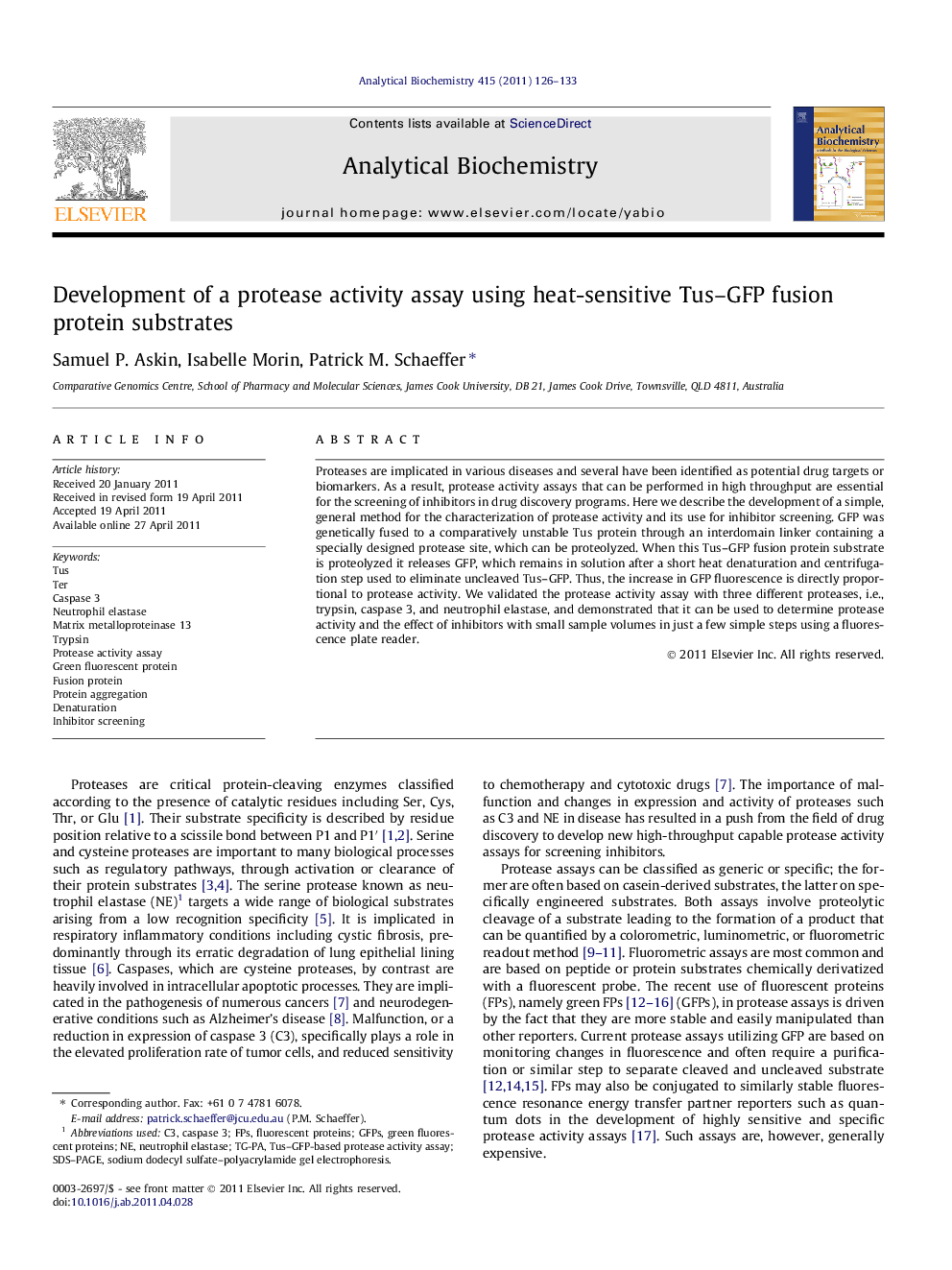| Article ID | Journal | Published Year | Pages | File Type |
|---|---|---|---|---|
| 1173501 | Analytical Biochemistry | 2011 | 8 Pages |
Proteases are implicated in various diseases and several have been identified as potential drug targets or biomarkers. As a result, protease activity assays that can be performed in high throughput are essential for the screening of inhibitors in drug discovery programs. Here we describe the development of a simple, general method for the characterization of protease activity and its use for inhibitor screening. GFP was genetically fused to a comparatively unstable Tus protein through an interdomain linker containing a specially designed protease site, which can be proteolyzed. When this Tus–GFP fusion protein substrate is proteolyzed it releases GFP, which remains in solution after a short heat denaturation and centrifugation step used to eliminate uncleaved Tus–GFP. Thus, the increase in GFP fluorescence is directly proportional to protease activity. We validated the protease activity assay with three different proteases, i.e., trypsin, caspase 3, and neutrophil elastase, and demonstrated that it can be used to determine protease activity and the effect of inhibitors with small sample volumes in just a few simple steps using a fluorescence plate reader.
